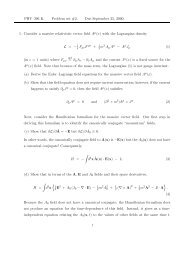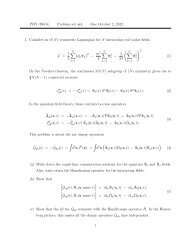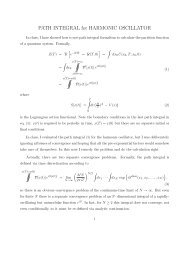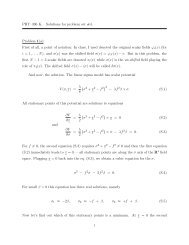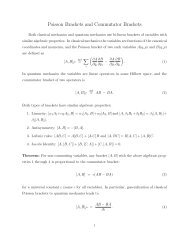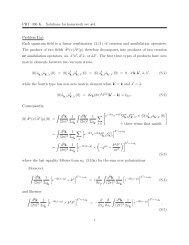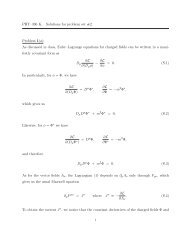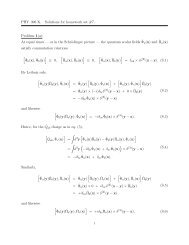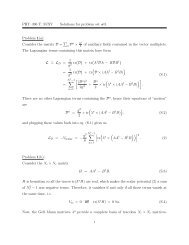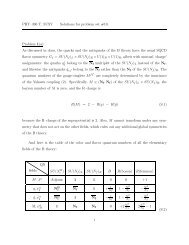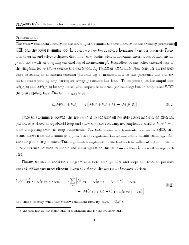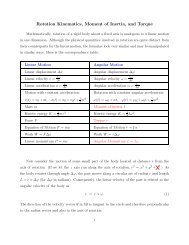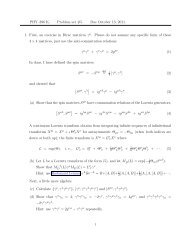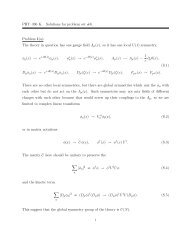PHYâ396 T: SUSY Solutions for problem set #1. Problem 2(a): First ...
PHYâ396 T: SUSY Solutions for problem set #1. Problem 2(a): First ...
PHYâ396 T: SUSY Solutions for problem set #1. Problem 2(a): First ...
You also want an ePaper? Increase the reach of your titles
YUMPU automatically turns print PDFs into web optimized ePapers that Google loves.
D 2 D 2 × D 2 D 2 = 0 =⇒ Π C × Π A = 0, (S.19)D ˙α D 2 D ˙α × D 2 D 2 = 0 =⇒ Π L × Π C = 0, (S.20)D 2 D 2 × D α D 2 D α = 0 =⇒ Π C × Π L = 0, (S.21)D α D 2 D α × D 2 D 2 = 0 =⇒ Π L × Π A = 0, (S.22)D 2 D 2 × D ˙α D 2 D ˙α = 0 =⇒ Π A × Π L = 0. (S.23)<strong>Problem</strong> 2(e):Since DDD ≡ 0, <strong>for</strong> any superfield Y (x, θ, ¯θ), D ˙α D 2 Y = 0, which makes D 2 Y a chiralsuperfield. Consequently, <strong>for</strong> any general superfield X,Π C X = D 2 ×D2X is a chiral superfield.−16∂2 (S.24)Likewise, DDD ≡ 0 makes D 2 × anything an antichiral superfield, hence<strong>for</strong> any X(x, θ, ¯θ), Π A X = D 2 × D2X is an antichiral superfield.−16∂2 (S.25)Finally,Π L X = D α × D2 D α8∂ 2X = D ˙α × D2 D ˙α8∂ 2 X (S.26)satisfies bothD 2 × Π L X = D 2 × D α × · · · = 0(S.27)andD 2 × Π L X = D 2 × D ˙α × · · · = 0,(S.28)which makes Π L X a linear superfield.4



